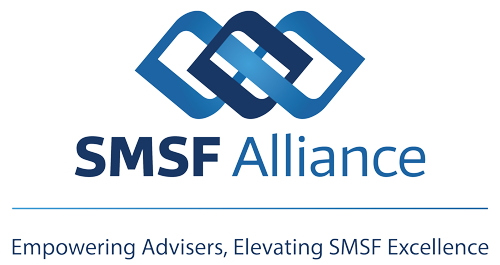End of Year SMSF Checklist
This check list includes matters that aren’t exclusively End of Financial Year but might be also addressed at this time for the sake of convenience. Some items constitute financial advice so require licensing.
- Check that concessional contributions have not breached the $25,000 limit. Remember that, if they have, the excess may count against the non-concessional limit and could, inadvertently, trigger the three-year NCC count. (Our SMSF Toolbox provides an alert, should the limits be breached, to give you the opportunity to consider allocating it to another member)
- If this is a year of unusually high taxable income a double contribution strategy might be considered. This will require an additional $25,000 to be contributed in June. Be cautious, as this strategy will utilise all next year’s contribution limit. Remember that
- members over 75 may only receive SG contributions
- members over 65 when the contribution is made, will generally need to meet the work test.
- the cap includes any employer contributions including SG contributions.
- a tax deduction may be taken for personal contributions. There is no longer a requirement to be substantially self-employed under the 10% rule.
- in-specie contributions of allowable assets may be made. There will be capital gains tax and stamp duty consequences.
- all personal contributions are regarded as non-concessional unless the appropriate ATO notification form has been completed.
- Consider making non-concessional contributions prior to year’s end. The cap is $100,000 provided the member’s total super balance as at 30 June 2018 was less than $1.6 million (in all funds). If the total super balance is in excess, consider if it can be lowered to below $1.6 million by lodging a TBEN that reflects the net value of the assets held. If under 65, the bring forward provisions may increase the available contribution this year to $200,000 or $300,000, subject to the member’s total super balance at 30 June 2018 being less than $1.5M or $1.4 million. Once again, it may be possible to reduce the member’s total super balance at 30 June 18 as per the above. (Our SMSF Toolbox identifies situations where this may apply and the assets that might, reasonably, be revalued.)
- Note that;
- Fund expenses that have been paid personally will be deemed non-concessional contributions unless notified as concessional contributions on the approved form.
- The work test generally applies if over 65. No contribution can be made once over 75 except for SGC.
- In specie contributions of eligible assets may be made. There may be capital gains tax and stamp duty consequences. Such contributions from an entity other than the member or spouse will be regarded as concessional contributions so be careful.
- Consider the advisability of the recontribution strategy. Note that changes to pension accounts may trigger a change to the member’s assessment for government pensions and the health care card as grandfathering may be lost. (Our SMSF Toolbox identifies specific recontribution strategy opportunities)
- Check if any of your over age 65 clients are eligible to make a Downsizer Contribution of up to $300,000.
- Consider making an after-tax contribution (non-concessional) into super to qualify for the government co-contribution.
- Consider making a spouse contribution for a non-working or low-income spouse who is less than 70 years of age.
- Ensure that all pension minimums have been drawn by June 30. A prorata amount is required if the pension commenced during the year. (Our SMSF Toolbox provides a summary of every pension account in every fund for you to check. It also provides individual alerts)
- Where the pension drawn is in excess of the minimum, consider if these should be reprocessed as lump sum drawdowns from any existing accumulation accounts or from the pension. This will require suitable documentation. (Our SMSF Toolbox provides a summary of every pension and every accumulation account to enable reallocation and reprocessing.)
- Transition to retirement pensions should be checked to ensure they have not breached the 10% maximum. (Our SMSF Toolbox checks these daily.)
- If a fund is substantially in accumulation mode, consider optimising the fund’s overall capital gains tax position by realising capital losses where the fund has realised capital gains for this financial year. Be aware of the Wash Sale provisions which will apply if transactions simply adjust the cost base without altering the investment portfolio or without assuming some investment risk in the process.
- If a fund is wholly in pension mode and has realised net capital losses for the year consider rolling a small portion back to accumulation, in this year only, as this will allow the capital losses to be carried forward indefinitely. Note that the fund will require an actuarial certificate for this year if an accumulation interest is created.
- If valuations for assets such as property, artwork, collectibles and unlisted shares are required for June 30 you might consider how they might impinge upon your considerations in 15. and 16. below.
- You should pay careful attention to those members whose total super balance is close to the $1.4m, $1.5m or $1.6m pivot points as an adjustment to their balance prior to this June 30, could increase their non-concessional contribution eligibility for next year by $100,000. This may be achieved by:
- Making a member account withdrawal
- Splitting a concessional contribution made in the previous year
- Carefully considering the 30 June valuation for manually valued assets such as real estate.
- Ensure that any funds with in-house assets have not breached the 5% of gross asset level as at 30 June. Be aware that valuations, yet to be determined for the end of this financial year, will be relevant to this consideration. Ensure that any current rent or previous year’s trust distributions owing from any asset involving related parties has been paid to the fund before June 30.
- If the fund is operating under QROPS restrictions, check to ensure it is not in breach and has met HMRC reporting requirements. You may also check to ascertain if any of your other UK expat clients have now reached age 55, making them eligible to consider establishing a QROPS approved SMSF, to transfer their funds to Australia. (We maintain a high level of UK pension expertise, gain quick approval from HMRC and administer SMSFs under HMRC guidelines.)
- Check to ensure that the investment strategy, to be provided to the auditor, has been updated to confirm the actual fund investments for the year. (Our SMSF Toolbox investment strategy tool provides a compliant investment strategy based on your SOA)
- If a fund holds a collectable or personal use asset it will need a storage statement to avoid an administration penalty. (Our SMSF Toolbox provides this).
- If a fund has both pension and accumulation accounts holding assets in an unsegregated manner, consideration might be given to establishing a second fund to hold the accumulation accounts to achieve effective segregation for tax purposes. There are contribution, CGT and acquisition of assets from related party considerations so be careful. (Our SMSF Toolbox identifies such opportunities)
- Individual trustees might take this opportunity to consider establishing a corporate trustee considering administrative and penalty regime concerns. (Our SMSF Toolbox provides a report that focuses on individual trustee funds as well as a check on trustee/member mismatches)
- Take this opportunity to check on the validity and appropriateness of any existing binding death benefit nominations. (Our SMSF Toolbox provides an alert where nominations have expired or are not valid.)
- If a fund holds derivatives it requires a Risk Statement for audit purposes. (Our SMSF Toolbox provides this.)
- If a fund holds reserves, except for a contribution reserve unless otherwise determined in the deed, it must have a separate Investment Strategy or a special mention in the investment strategy for audit purposes. (Our SMSF Toolbox provides this.)
- If tax deductible life insurance premiums are applicable to the fund this is a timely opportunity to ensure the benefit will be paid to a tax dependant to avoid generating an untaxed element. If this is not the case, then take remedial action. If it is the case, then consider that eligibility for a future service deduction will be enhanced if premiums are paid monthly. (Our SMSF Toolbox provides alerts and analysis calculators for both contingencies.)
- If the fund holds reserves that are no longer required, consider distributing them to existing members. Provided the increase to the respective member accounts is prorata and less than 5% there will not be any concessional cap consequences. The distribution will be counted against concessional caps if member accounts are increased by 5% or more or if the distribution is not prorata. If the cap is breached, the resultant release to the individual and personal tax consequences could be regarded as a legitimate strategy to access reserves that are no longer required. Reserve allocations can be made to members of any age.
- You might take this opportunity to check for lost super.
- If we are not yet administering your funds you might like to take this opportunity to consider switching to our strategic administration service under our special offer. For further information on our service and our unique SMSF Toolbox, contact David Busoli on 0499 778 584 or dbusoli@smsfalliance.com.au


